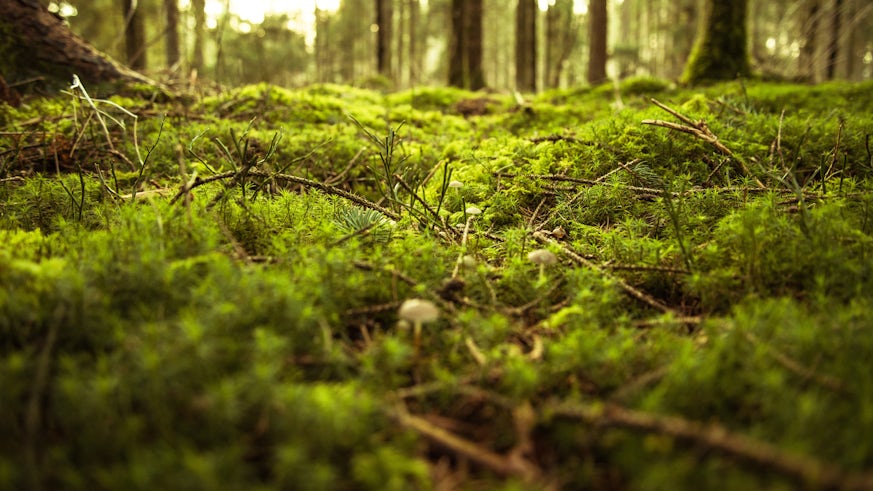Unravelling the mysteries of the first land plants
25 January 2022

Recent palaeobotanical research on early terrestrial ecosystems hints at the existence of a novel and previously unknown major group of early land plants.
Twin papers from Professor Dianne Edwards and her team, published in the journal New Phytologist, have uncovered pieces of a persistent puzzle, which, when solved, will provide the key to a better understanding of the early evolution of land plants.
Through careful examination of minute fossils preserved in charcoal from the earliest Devonian strata (c. 415 million years ago) and detailed comparative work on existing plants, research led by the School of Earth and Environmental Sciences documented fossils bearing similarities to plants still in existence. Lacking physical evidence, the authors stop short of drawing direct connections between the two types of fossils. Nevertheless, the fossils provide evidence for the existence of a major group of early plants called the eophytes.

The nature of the first land flora is an enduring mystery where the principal players have never been seen in their entirety, yet much can be inferred about their characteristics from what they have left behind.
The eophytes are best understood in the context of the early history of land plants. All living vascular plants share vascular tissues containing specialised water-conducting cells known as tracheids, for which they are referred to as tracheophytes, and branched sporophytes, which underpin their classification as polysporangiophytes. These two characters separate vascular plants from the nonvascular plant lineages collectively referred to as bryophytes, which are made up of mosses, liverworts, and hornworts.
The evidence available is inconclusive as to whether tracheid-based water-conducting tissue and sporophyte branching evolved simultaneously in the common ancestor of vascular plants, or in a sequence. And, if so, in what order the evolution occurred. The discovery of eophytes brings us one step closer to confirming the ancestral polysporangiophyte and suggests promising threads to follow, but also presents further questions.
The eophytes could be the ancestral polysporangiophytes, if their branched sporophytes and food-conducting cells evolved in concert and not sequentially - a question that can be solved only by new fossil discoveries.
The discovery of the eophytes raises the question of their position in the evolutionary relationship, as well as implications for character evolution deep in the history of land plants. Given their combination of characters, of which different subsets are shared with the bryophytes and with polysporangiophytes, the eophytes could occupy several positions in the evolution of early land plants. To address this, Professor Edwards advocates for further comparative studies of densely sampled existing bryophyte lineages for the anatomy and ultrastructure of the food-conducting cells.
The incongruence between patterns of relationships implied by the traditional evolutionary sequence and the sequence of appearance of polysporangiophyte characters is deepened by the discovery of eophytes. This further complicates the mystery in two other directions. First, it indicates that a lot was happening in morphological evolution during the Silurian and Early Devonian (c. 445–400 million years ago) and much of that is unknown, for now. Second, it shows that some of the evolutionary changes that are vital to untangling patterns of relationships were occurring at very small scales in these organisms.
The first direction points to the incomplete exploration of the fossil record and suggests another important thread to follow: renewed investigations of the Silurian and Lower Devonian rock records for new plant fossils. The second indicates that integrating the new fossils in evolutionary discussions will necessitate observations of fine anatomical and ultrastructural detail, which will require fossil discoveries in locations where the quality of preservation allows for levels of observational detail like those reported by the eophyte fossils.
The work of Professor Edwards and her team, including Jennifer Morris and Lindsey Axe (Cardiff University), Wilson Taylor (University of Wisconsin-Eau Claire), Jeffrey Duckett, Paul Kenrick, and Silvia Pressel (Natural History Museum), adds an important chapter demonstrating the irreplaceable role of fossils in probing the deepest recesses of plant evolution.
Piecing together the eophytes – a new group of ancient plants containing cryptospores and Earliest record of transfer cells in Lower Devonian plants are both available online in the journal New Phytologist.